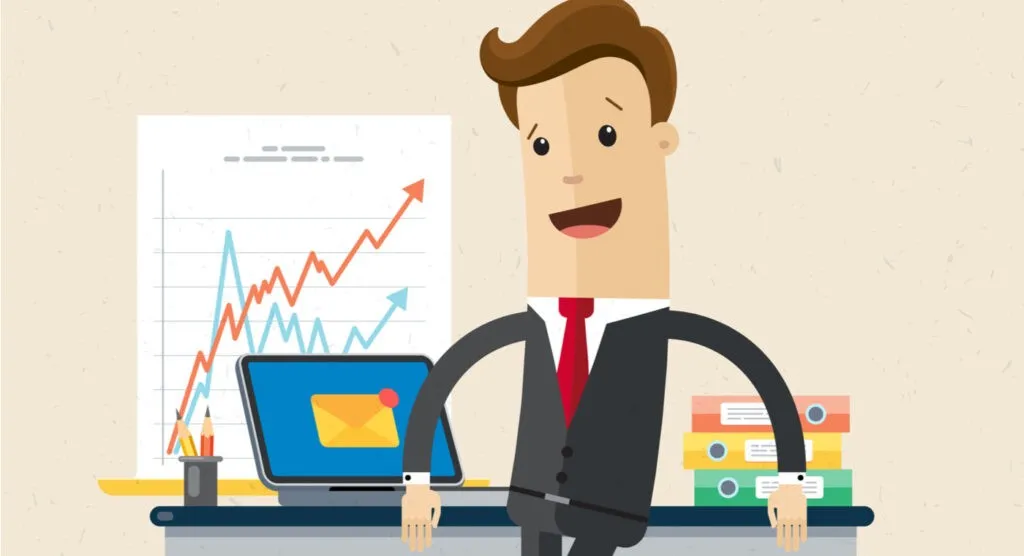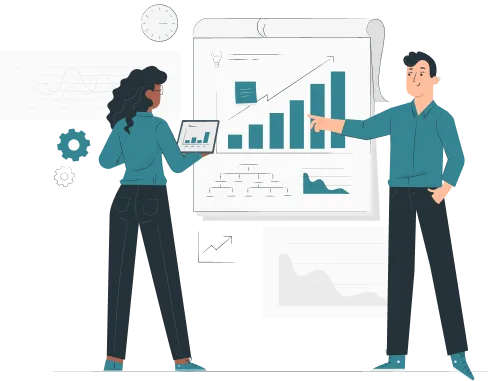The landscape of sales is constantly changing. If you want to stay ahead of your competition, you need to be prepared for the challenges that 2025 will bring.
In this blog post, we will discuss sales development tips that will help you stay ahead of the curve.

The sales development landscape is shifting, and if you want to stay on top of your game as a sales development representative (SDR), you'll need to adapt.
SDRs previously conducted research and outreach to determine if a prospect was qualified, allowing them to hand off the call to an account executive. SDRs today are responsible for much more, owing to new technology and automation.
We will talk about how to adapt to changes in the market, and how to build relationships with your customers. Stay tuned for more information!
The Changing Landscape of Sales Development
SEPs, such as Alore CRM, are now seen as a critical component of a sales organization's tech stack by 92% of sales organizations. In addition, automation technology, like the kind that is found in chatbots, is taking over.
The SDR of today can take advantage of these technical advancements, which have made B2B sales more efficient and easier. All of this automation means that you'll be spending less time cold calling and emailing unresponsive leads while focusing more time on client personalization.
You're not only concerned with determining if a prospect is "ready to buy," but also with delivering early value and establishing a connection with them. Customers don't want to keep doing things the old way, which is a waste of time and not what they desire.
According to a recent Forrester survey, customers want immediate access to information and interactive tools that allow them to see if your product is suitable for them. These are areas where chatbots and other automation technologies can assist you.
Instead of focusing on your shortcomings, concentrate on what you do well as a person: problem-solving and developing relationships. How can you stay ahead of the game? It's critical to stay one step ahead of the competition by adapting.
SDR sales strategies now prioritize personalization over high-volume outreach. Sales professionals must stay adaptable to succeed in today’s evolving sales landscape. Keeping up with industry trends ensures that SDRs remain competitive and informed.
Why Sales Development Matters for Your Team

Sales development is crucial for building a strong sales process. It helps sales development representatives (SDRs) and sales teams work smarter, not harder. Let’s explore how sales development can benefit your team.
1. Creates a Steady Flow of Leads
Sales development ensures your team always has leads to work with. SDRs focus on lead generation and lead qualification to find potential customers. This means your sales pipeline stays full, giving account executives more opportunities to close deals.
2. Saves Time for Closing Deals
By qualifying leads early, SDRs save time for account executives. This allows them to focus on closing deals with ready-to-buy customers. It’s a systematic approach that boosts efficiency and reduces wasted effort.
3. Improves Team Efficiency
When SDRs handle outreach efforts and initial contact, it frees up other team members. Everyone can focus on their strengths, whether it’s engaging prospects or building long-term relationships. This improves sales performance across the board. Essential skills like time management and lead qualification improve SDR performance.
4. Boosts Revenue Growth
A well-organized sales development process leads to more closed deals and higher revenue. By keeping the sales pipeline healthy, your team can consistently hit its targets. This is key to business growth.
5. Strengthens Customer Relationships
SDRs help build trust with prospects by addressing their needs early. Effective communication and active listening ensure that potential customers feel valued. This lays the foundation for long-term relationships.
6. Supports Team Collaboration
Sales development encourages teamwork. SDRs, account executives, and sales leaders work together to meet goals. Collaboration improves problem-solving and helps the entire team succeed.
Key Sales Development Tips to Follow

1. Learn the Sales Process
Understanding the sales process is crucial. It begins with lead generation and moves through lead qualification, initial contact, and deal closure. As a sales development representative, knowing this process helps you manage your tasks better.
Developing strong sales skills, like active listening and problem-solving, is essential for SDRs. For example, focus on engaging prospects early by addressing their needs. Use effective communication to build trust. By actively listening, you’ll gather valuable information about potential customers.
This step-by-step approach ensures you’re well-prepared to hand off qualified leads to account executives.
2. Create a Solid Sales Pipeline
A strong sales pipeline keeps your team on track. Think of it as a roadmap that shows where prospects are in the sales journey. By organizing prospects in your pipeline, you can prioritize outreach efforts and track interactions more effectively.
Use tools like CRM software to maintain detailed records of potential clients. This allows you to see which prospects need follow-ups and where the bottlenecks might be. A clear pipeline not only improves team efficiency but also ensures you’re closing deals consistently.
Sales reps who embrace tools like CRM systems can track interactions more effectively.
3. Improve How You Qualify Leads
Qualifying leads is the backbone of an efficient sales process. It helps sales development representatives (SDRs) identify potential customers who are ready to buy. By focusing on lead qualification, you can save time and energy for your sales team.
To improve, start by defining clear criteria for what makes a lead “qualified.” For example, ask questions like: Does the lead match your target audience? Are they ready to solve a problem? Address objections by listening carefully and providing clear solutions to concerns.
Use tools like CRM systems to track interactions and organize lead information. This ensures no details are missed and account executives can prioritize the right leads.
The result? A smoother sales pipeline and fewer wasted outreach efforts.
4. Listen Actively to Customers
Active listening is a must-have skill for any sales professional. It’s not just about hearing; it’s about understanding customer needs and building relationships. When SDRs listen actively, they show customers they care, which helps to build trust.
Start by focusing on what the customer is saying. Take notes during conversations and ask follow-up questions to clarify their needs. A thorough understanding of your prospect’s pain points helps in offering tailored solutions.
For instance, if a customer mentions a challenge, ask how it’s affecting their business. This shows you value their input and are ready to provide solutions that match their goals. Being an active listener helps SDRs build trust and uncover key customer insights.
Active listening also helps SDRs identify opportunities to engage prospects more effectively. When customers feel heard, they’re more likely to trust your recommendations and move closer to making a purchase.
5. Work on Finding and Engaging Leads
Finding the right leads is the first step in successful sales development. Leads are potential customers who may need your product or service.
Sales prospecting involves researching and reaching out to potential clients to fill your pipeline. To identify qualified leads, start by researching their business needs and challenges. Look for people who match your target audience, such as those in a specific industry or role.
Once you find potential leads, focus on engaging them effectively. Personalized communication works best. Instead of sending generic messages, mention specific problems your product can solve.
For instance, if you know the lead struggles with time management, highlight how your solution saves time. Use tools like CRM software to track interactions and keep your outreach organized.
This systematic approach not only improves engagement but also increases the chances of turning prospects into customers.
6. Use Automation for Outreach
Automation makes outreach faster and more efficient. It helps your sales team save time by handling repetitive tasks like sending follow-up emails or tracking responses.
For example, email automation tools allow you to schedule messages and ensure timely communication with leads.
Another great way to use automation is for lead qualification. Automated systems can score leads based on their engagement, such as how often they open emails or visit your website.
This way, your sales development representatives (SDRs) can focus on the most promising prospects.
Automation doesn’t replace the personal touch but supports it. By automating routine tasks, your team has more time to build relationships with prospects and move them through the sales process.
“Streamline Your Sales Outreach with Alore’s Drip Campaigner! Sign Up Today to Know More.”
7. Become a Problem Solver

Take a more consultative approach to your role by assisting customers in finding the solutions that your product offers for their most pressing business issues.
Focus on understanding client pain points and coming up with innovative solutions to those issues in order to stand out among a sea of automation.
Take a more consultative approach to your job by assisting clients in discovering the possibilities that your product offers for their most pressing business issues.
Find out as much as you can about your prospect and their company, including their social media presence, open job postings, and anything else that will help you better understand the issues they may be dealing with.
Create a concept for your product that's unique, but also resonates with what people need. This is frequently a team effort, with the prospect themselves assisting you in developing a compelling answer, but it's ultimately up to you to come up with something interesting.
The more you excel at problem-solving, the better you'll be at generating high-quality leads who are eager to buy your solution.
8. Raise your Communication Game
Without a clear understanding of your goals and situation, you're only likely to annoy someone. Sending mass emails without a personalized approach will just be lost in the noise—the prospecting you do must be far more individualized and targeted.
A generic message such as "Hey there! I'd love to have a few minutes of your time to chat" Make the most of your content by making it brief, customized, and laser-focused on value.
Demonstrate to them that you understand their specific challenges and that you can assist them. Jason Bay has a fantastic post on how to improve your first communication with the prospect, titled "How to Increase Sales by 25% Using Text Messages." You may read that here.
9. Get Good at Reaching Out Cold
Cold outreach is a key skill for any sales development representative. It involves contacting people who may not know about your product or service yet. To do this well, you need a clear strategy and the right tools.
Start by researching your prospects. Understand their business needs and challenges. Use tools like a CRM to organize information and track your communication. When reaching out, personalize your message.
Instead of sending a generic email, mention something specific about their company or industry. This shows you’ve done your homework and makes your message stand out.
Be persistent but polite. Follow up if you don’t hear back right away. Most successful outreach efforts involve multiple touchpoints, including emails, phone calls, or even video messages.
With practice, you’ll get better at engaging prospects and building relationships that lead to opportunities. Remember that every prospect is a human being with unique needs and goals.
Cold outreach may seem challenging at first, but it’s an essential part of the sales process. With the right approach, it can open doors to valuable connections and drive business growth.
10. Master the Art of Relationship Building

Sales has always revolved around relationships, but it was previously handled by account executives. That isn't the case anymore.
Stick to your network and prospects, stay up to speed on what they're doing, and offer value where you can—send them an article you think would be beneficial, a boost of encouragement, or a referral to someone else in your network.
11. Adopt Innovative Technology and Channels
No need to be afraid of the sales technology environment, even if it is changing. Learn about new channels, programs, and trends so that you are well-versed in them.
Follow your customers' lead. Reach out to them via InMail if they're active on LinkedIn, for example. If they produce a lot of videos, you may send them a video with your value proposition as a way of connecting with them.
You should focus on being where your consumers are rather than forcing them to come to you.In addition, adopting innovative sales engagement technology will provide you more time to focus on building genuine connections with your prospects.
Alore CRM is ideal for this since the platform allows you to track prospects, manage prospecting activities, and create customized email sequences.
It's also compatible with a variety ofsales tools, so you may have one unified technology universe where all of your technologies work together in harmony.
12. It's time to change your perspective
The bottom line is that the way sales development is done has been revolutionized by technology and customer expectations, and it isn't going to stop anytime soon. Objection handling becomes easier when SDRs anticipate and prepare for common concerns.
In 2025, to be a successful SDR, you must keep an eye on the trends and modify and improve your prospecting strategy on a regular basis. Use data from CRM systems to identify areas where your outreach can improve.
You'll not only succeed as an SDR but also climb up the ranks if you do so.
The Role of a Well-Versed SDR Team in Business Growth

A well-versed Sales Development Representative (SDR) team is key to business success. They bridge the gap between lead generation and deal closure, ensuring no opportunity is missed. A sales development rep plays a critical role in identifying and engaging potential customers.
These professionals engage with potential customers, understand their needs, and guide them through the sales pipeline.
A skilled SDR team saves time for account executives by qualifying leads. This allows executives to focus on closing deals and building relationships with customers. It also improves team efficiency, as SDRs handle the initial contact and follow-ups with prospects.
To navigate challenges in sales, SDRs must rely on tools, training, and teamwork. Using tools and automation, SDRs streamline outreach efforts, track interactions, and maintain consistency.
This systematic approach supports long-term business growth. Additionally, their ability to handle challenges and adapt to customer needs fosters trust and strengthens relationships.
When your SDR team is well-trained and equipped, they add tremendous value to your business. Their efforts lead to more sales opportunities and, ultimately, greater revenue growth. Investing in their development is a step toward achieving your business goals.
Advanced Sales Development Techniques

1. Hyper-Personalized Outreach
Hyper-personalized outreach means tailoring messages specifically for each prospect. This involves using their name, job role, and even recent company news to make your communication relevant.
How to:
- Start by researching your prospects. Use tools like LinkedIn or CRM systems to gather details about their business challenges.
- When writing emails, mention something unique about their role or industry. This shows that you understand their needs and builds trust. Clear written communication is vital when crafting emails that resonate with prospects.
“Personalize Like a Pro with Alore’s Drip Campaigner. Click to Read More”
2. Leverage Multi-Channel Engagement
Multi-channel engagement means reaching prospects using different methods like email, social media, and phone calls. This ensures your message gets noticed.
How to:
- Use a mix of tools to connect. Start with an email, follow up with a LinkedIn message, and then make a phone call.
- Video prospecting is an engaging way to connect with prospects on a more personal level.
- This strategy keeps your outreach fresh and increases the chances of a response. Track interactions in your CRM to stay organized.
3. Account-Based Selling (ABS)
ABS focuses on targeting specific high-value accounts instead of casting a wide net. It aligns sales and marketing teams to personalize their approach for key decision-makers.
How to:
- Identify your top accounts by analyzing data from past sales. Work closely with marketing to create content that addresses the unique challenges of these accounts.
- Use tools like automation and CRM to streamline your efforts and measure success.
- Marketing initiatives should align closely with sales efforts to achieve consistent messaging and results.
4. Sales Playbooks for Consistency
A sales playbook is like a guidebook for your team. It contains scripts, strategies, and tips that help sales development representatives (SDRs) work consistently. With a playbook, everyone follows the same process, which improves results.
What to Include in a Playbook:
- Sample email templates for outreach.
- Step-by-step guides for lead qualification.
- Suggested questions for calls.
How to Use It: Train your SDR team to use the playbook daily. Update it regularly with new ideas from successful SDRs. A well-maintained playbook saves time and helps everyone stay on track.
5. Continuous Feedback Loops
Feedback is key to improvement. It helps SDRs know what they’re doing well and where they need to grow. It’s a system where team members receive regular feedback from managers and peers. This creates a cycle of learning and improving.
How to Create One:
- Schedule weekly meetings to review performance.
- Use data, like email response rates or call success rates, to give clear feedback.
- Encourage SDRs to share their challenges and ideas.
- Regular training sessions help SDRs stay updated on the latest tools and techniques.
"Track, Adjust, and Succeed with Alore’s Integrated Campaign Tools. Sign Up Today!"

.webp)






